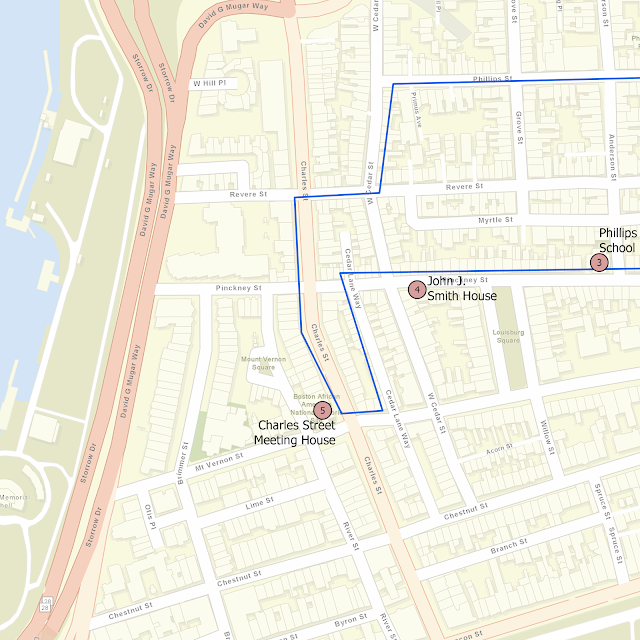Boston: John Coburn House

As we visit another home along Boston's Black Heritage Trail, we have the opportunity to see the impact that affluence can have on a worthy cause. The builder and first resident of the home at 2 Phillips Street was John P. Coburn, one of Boston's wealthiest African-American residents. A native of the city, he not only provided evidence that black men could be successful entrepreneurs, but also used his abundant resources to assist the cause of freedom. John Coburn originally worked as a housewright - a term that included construction and repair of homes - but as a young man made a change to the clothing industry that employed many African-Americans. After his business outgrew his home, he expanded to run a pair of stores on land that is now home to Boston's City Hall, possibly assisted in this venture by his white father, also named John. By the time Coburn was in his young 30s he had become prosperous enough to hire a well-known architect by the name of Asher Be...


